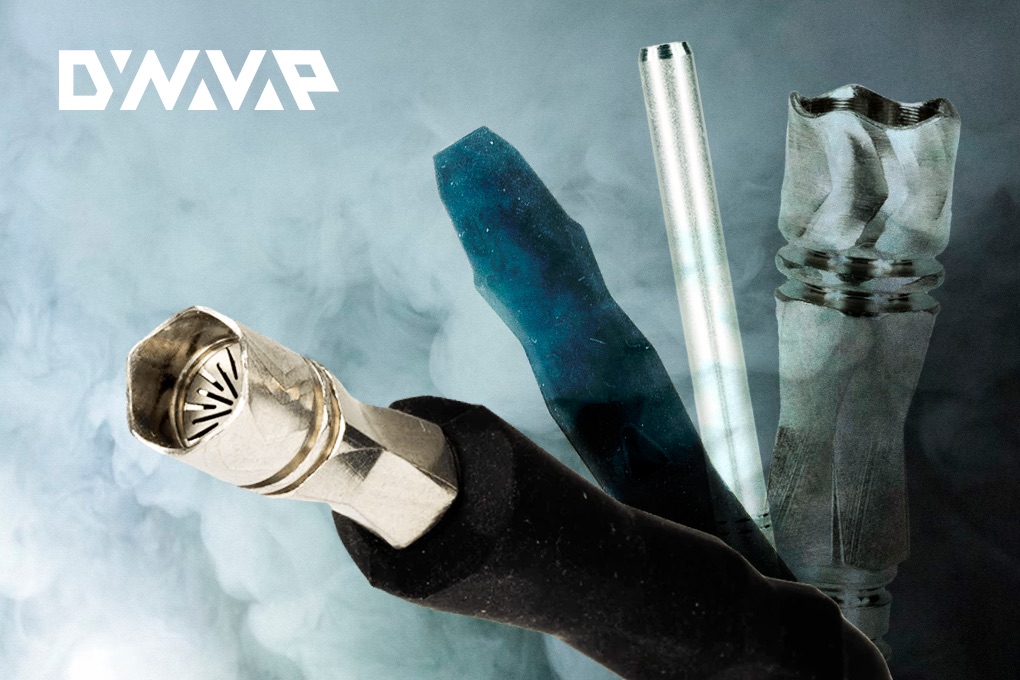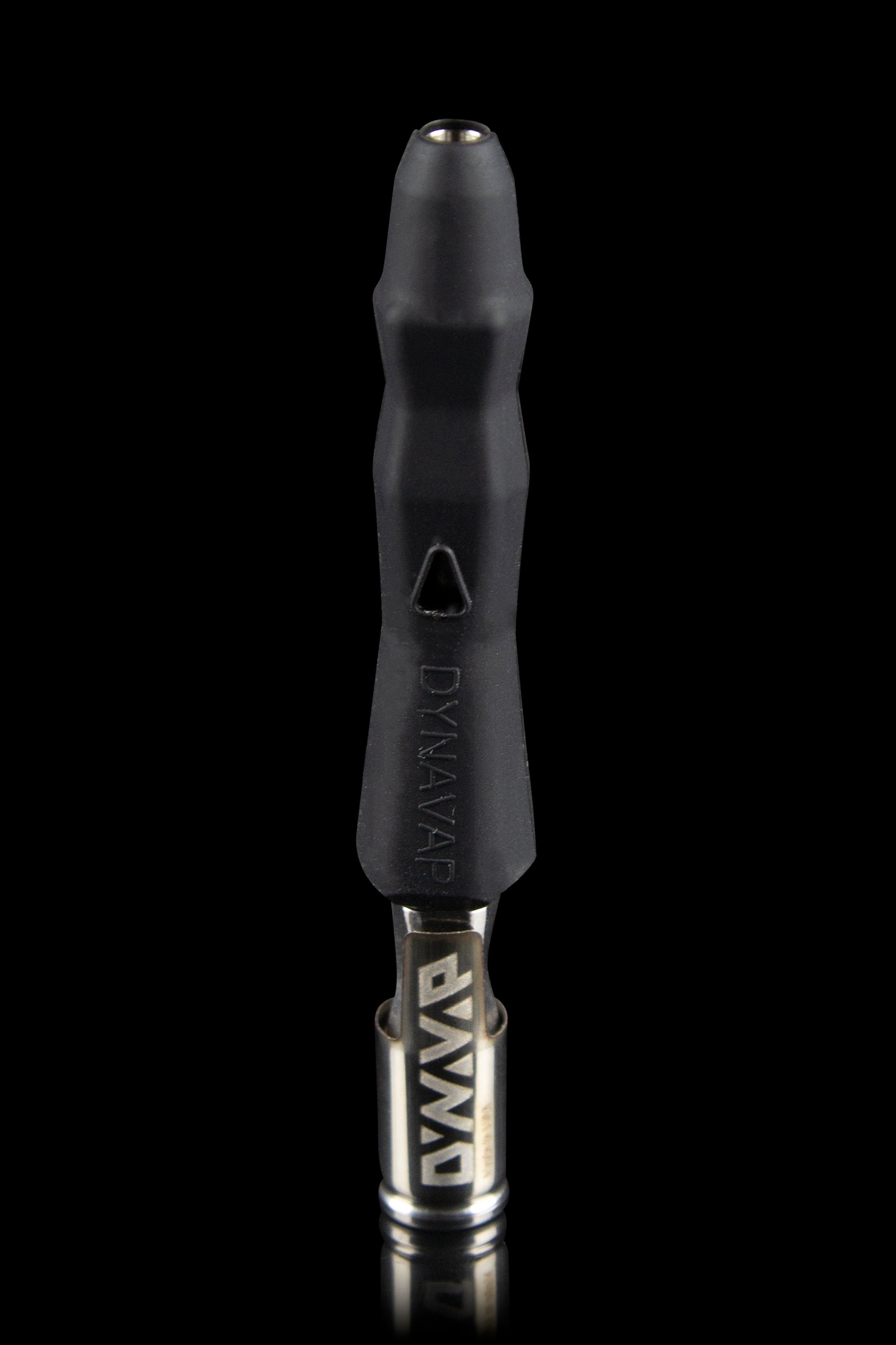AFFILIATE MARKETING
DynaVap B review: a tiny dry herb vaporizer that packs a punch |

Hearst Newspapers participates in various affiliate marketing programs, which means we may earn a commission when you click links in this content. Our professional curators independently research and recommend products and services, with no newsroom involvement. Merchants can pay for a sponsored listing and may choose to rewrite their summary. When that happens, we label the listing as “Sponsored” and highlight it in grey to differentiate the merchant-provided content from our writing.
If you want to be able to vaporize dry herbs on the go, you’ve come to the right place. We want to take a closer look at what has to be one of the best small dry herb vaporizers on the market. We are talking about the DynaVap B.
The DynaVap B is a fairly new product to hit the market, although it comes to us from a highly trusted brand name. From what we can tell, this is one of the most functional and user-friendly small dry herb vaporizers out there. It’s made with solid materials, is easy to use, and comes with everything you need to get started.
That said, before you take our word for it, we do want to perform an in-depth review. We want to take a closer look at all of the features, benefits, and more. Let’s get into our DynaVap B review and figure out whether or not this is right for you.
What is the DynaVap B?
The DynaVap B is a very small dry herb vaporizer. This means that you put your hemp and cannabis flowers directly inside the chamber. Yes, here we are talking about using actually dried flowers, not oils or other extracts. If you want to do a dab, you’ll need to look elsewhere.
Many people prefer this method of consuming cannabis. It helps to preserve the natural flavors and terpenes of the strain you’re consuming. Vaping dry herbs also tends to be healthier than smoking, but it’s not without its risks.
The DynaVap B is ideal for when you’re on the go. Dry herb vaporizers like this are one of the only options at your disposal if you want to vaporize your cannabis when you’re not sitting at home.
How to Use DynaVap B
Using the DynaVap B is about as easy as it gets. You literally just have to put your dry herb in the chamber, shut it, heat it with a torch, and take a hit. Yes, that is right, this vaporizer does not have its own heat source. This is a bit of a downside, but, considering the price of this unit, it’s not really a dealbreaker.
You have to use an open flame like a torch to heat up the oven chamber, which results in vaporization. If you’re holding the flame towards the top, you’ll get smaller, quicker hits. If you want thicker clouds, heating the bottom is the way to go.
DynaVap B Review
Now that you know exactly what this device is is, here’s a full DynaVap B review to determine whether or not it is right for you.
About the Brand
DynaVap was started back in 2014. In just nine short years, this has become one of the biggest producers of dry herb vaporizers out there. The DynaVap B vaporizer, which we are reviewing today, was just released a couple of years ago.
It has quickly become one of their most popular products. George, the founder of the company was born in rural Wisconsin, and is an inventor and entrepreneur with many patents in various countries around the world.
In the Box
What is really cool about this particular dry herb vaporizer is that it is made with only five components. It is made with a stainless steel captive cap, a condenser, a tip, a silicone stem, and the CCD. What’s also cool is that it’s made out of just two different materials, both of which are very durable.
Design
We do really like the design of this vaporizer, mainly because it’s so compact. It comes in at just 3.5 inches tall and weighs only 13 grams. This makes it by far one of the smallest and lightest dry herb vaporizers on the market. We do very much like this in terms of portability. It’s also the kind of thing that you can easily fit into your pocket.
Furthermore, the fact that it only comes in five pieces is a big benefit. As far as we are concerned, the fewer pieces these vaporizers come with, the better. Fewer pieces mean fewer things that can break and fewer things that need maintenance and cleaning.
Features & Benefits
Let’s take a quick look at the main features and benefits that the DynaVap B vaporizer comes with.
- The food-grade silicone stem is comfortable to touch to your mouth, completely safe, and extremely durable too. Thanks to being silicone, it’s also waterproof.
- The mouthpiece here is also tapered, as well as 10 millimeters in size, therefore being ideal for most people.
- What’s really cool is that the silicone stem has a pentagonal design that prevents it from rolling and moving.
- You might also appreciate how the condenser is easy to adjust. This means that you can easily adjust the cooling and airflow of this unit to get the exact kind of hit that you want.
- The chamber can fit 0.05 grams of dry herb. No, this is not a huge chamber, but it is still enough for some great hits on the go. This unit is also ideal for micro-dosing.
- Perhaps the coolest part here is that there is no battery. You don’t need any kind of power source. Here, you would use a torch or other flame to heat up the oven chamber inside which the cannabis sits. Depending on where you heat the unit up, the vapor will be thicker or lighter. Therefore, it doesn’t have precise temperature controls, but you can control the vapor results you get by changing where you heat the chamber and how much you heat it.
Ease of Use
In researching the DynaVap B review, we found the device to be very easy to use. Now, it does take some getting used to. This is because you need an open flame torch to heat up the chamber.
It’s not like it’s very difficult, but it’s definitely not like a normal vaporizer where you just press a button, and the battery and coil do the work for you.
Just keep in mind that that chamber will get very hot. You don’t want to heat it up with a torch and then touch it with your bare hands, as this will cause burns.
Temperature Controls
In terms of temperature control, the DynaVap B is unlike other vaporizers where you can press a button to set a precise temperature. The longer you heat the chamber, the hotter it gets, and the thicker the vapor will be.
Finding out exactly what kind of flame to use, how long to heat the chamber for, and where on the chamber to hold the flame will take a little bit of practice.
Materials
We really like how this unit is made out of just two materials: silicone and stainless steel. The silicone is more or less to provide you with some grip on the outside, and everything else is made out of stainless steel. It’s a very durable unit, it’s impact-resistant, and corrosion-resistant as well.
Battery Life
This is, of course, the beauty of the DynaVap B. There is no battery to deal with. You never have to worry about a battery dying. For us, this is a huge benefit considering the price range. But, for others, it might be a major downside. It all boils down to what you’re expecting to do with your vaporizer.
Vapor Quality
The quality of the vapor with the DynaVap B can be very good, granted that you know what you are doing.
As long as you know what kind of flame to use, where to hold the flame, and how long to hold it therefore, you can achieve some pretty good results. It can take a bit of trial and error to figure out exactly how to heat this unit up to provide you with the exact results that you like.
Pros and Cons
As is the case with any product out there, this device has both pros and cons that need looking at. Here’s what we found while writing the DynaVap B review:
Pros
- Exceedingly simple design
- Very few components
- Durable materials
- Easy to use
- Super portable
- Affordable
- Ideal for micro-dosing
- Never have to worry about batteries
Cons
- Chamber is a bit small
- No internal heating element
How to Clean DynaVap B
Because the DynaVap B is made with so few pieces, it’s also very easy to clean. Simply take all five of the pieces apart and wipe down the silicone with a damp rag. You can use a bit of gentle soap to wipe down silicone in case it has grease or other debris on it.
You can then take all of the metal components and soak them in hot water or even rubbing alcohol. You can then use something like a Q-tip or a cloth to wipe everything down.
DynaVap B vs M
When it comes down to it, there is really not much of a difference between the B and M models. However, one noticeable difference here is that the DynaVap M is slightly larger.
The M can fit 0.1 grams of dry herb, whereas the B can only fit 0.05. Furthermore, the B features a silicone sleeve on the exterior, which the M does not. Some people like silicone for comfort, whereas others don’t like it because it’s just an extra component that requires cleaning and maintenance.
The other difference here is that if you have the special adapter, you can use oils and concentrates with the M, something that the B cannot do. Therefore, if you want the ability to vape dry herbs along with concentrate vaping, it is the M that you need.
Microdosing on the go is easy with the DynaVap M 2021 Edition manually-controlled vape with a practically indestructible build. This sleek and slim dry herb vaporizer is constructed from medical-grade stainless steel and provides tasty, reliable vapor. W
DynaVap B Overall Impressions
Our overall impressions of the DynaVap B vaporizer are extremely good. We think that it is an ingenious solution to a problem that so many people have. Simply put, you never have to worry about dealing with charging, or dead vaporizer batteries again.
Simply heat it up with a torch, and you are good to go. This simplistic design makes it not only useful but also very durable.
It has extremely few components, which means that there aren’t many breakable pieces here. Overall, especially for the low price it comes in at, we think that the DynaVap B is a fantastic driver vaporizer to consider. We hope you found this DynaVap B review to be helpful in guiding your purchasing decision. If you decide to move forward, you can get the device from the Smoke Cartel website here.
Hearst Newspapers participates in various affiliate marketing programs, which means we may earn a commission when you click links in this content. Our professional curators independently research and recommend products and services, with no newsroom involvement. Merchants can pay for a sponsored listing and may choose to rewrite their summary. When that happens, we label the listing as “Sponsored” and highlight it in grey to differentiate the merchant-provided content from our writing.
AFFILIATE MARKETING
Learn a New Language with This Fresh Approach

Disclosure: Our goal is to feature products and services that we think you’ll find interesting and useful. If you purchase them, Entrepreneur may get a small share of the revenue from the sale from our commerce partners.
As exciting as it may be, learning a new language can often feel like a daunting task, with the typical endless vocabulary drills and grammar exercises. But Beelinguapp is here to change the game.
This innovative language learning app takes a fresh approach by combining audiobooks and dual-text reading to create an immersive, engaging experience. And right now, you can get a lifetime subscription to Beelinguapp—and all 14 of its languages—for just $34.99 (reg. $100) when you use code TAKE5 at checkout.
Traditional language learning methods can be time-consuming and overwhelming, especially for busy professionals. Beelinguapp offers a new, intuitive way to learn, making it easy to fit into your daily routine. Instead of memorizing endless vocabulary lists, you’ll follow along as you read and listen to a native speaker, seeing the same text in two languages side by side.
This side-by-side format is the core of Beelinguapp’s unique approach. It allows you to compare your native language to the one you’re learning, improving your understanding in real time. It’s like a language-learning karaoke, where you can follow the text in both languages while listening to a fluent speaker guide you through the pronunciation.
Beelinguapp caters to modern learners by offering 14 languages, including Spanish, English, German, French, Korean, and more. With its audiobook-style lessons and an ever-growing library of texts, you can choose from a wide variety of content—whether you’re interested in fairy tales, news articles, science papers, or novels.
This flexibility allows you to learn the way that best fits your lifestyle, all while gaining real-world conversation skills. The app provides texts at different levels, so you can start as a beginner and gradually build up to more advanced reading and listening skills.
If you’re hoping to learn a new language to help grow your business, this might be just the approach you need.
Through October 27, you can get a lifetime subscription to Beelinguapp for just $34.99 (reg. $100) when you use code TAKE5 at checkout.
StackSocial prices subject to change.
AFFILIATE MARKETING
Nvidia CEO Jensen Huang: Demand For Blackwell AI Is Insane

In May, Nvidia CEO Jensen Huang said that “the next industrial revolution has begun,” and AI will drive “significant productivity gains.” It looks like he’s right — industry demand for Nvidia’s next-generation AI chip, Blackwell, is through the roof.
“Blackwell is in full production, Blackwell is as planned, and the demand for Blackwell is insane,” Huang told CNBC on Thursday. “Everybody wants to have the most, and everybody wants to be first.”
Related: Nvidia CEO Jensen Huang’s Biggest Worry Shows that Success Has a Downside
Nvidia first announced Blackwell in March and stated that it was the most powerful AI chip in the world with advanced security capabilities, better performance, and more memory. The biggest names in AI, including OpenAI, Microsoft, Meta, Amazon, and Google, will use Blackwell to power their AI efforts.
Nvidia CEO Jensen Huang displays the new Blackwell GPU chip, left, and the Hopper GPU chip, right, in March 2024. Photographer: David Paul Morris/Bloomberg via Getty Images
“There is currently nothing better than NVIDIA hardware for AI,” Tesla and xAI CEO Elon Musk stated, at the time.
Since the initial announcement, Blackwell has hit a few snags in production, leading to delays. Nvidia CFO Colette Kress said in late August that the company has fixed the issue and expects to ship “several billion dollars” worth of the chip in the fourth quarter of 2024.
Related: Nvidia’s Immense Market Power Is Worrying Investors — Here’s Why
The chip costs between $30,000 to $40,000 and took $10 billion to develop.
Huang said that Nvidia has updated its platform significantly with Blackwell, and intends to continue updating it. Nvidia has increased performance by two to three times from its 2022 Hopper chip to its Blackwell chip, which Huang says increases revenue for Nvidia’s customers by two to three times.
“What we’re looking at now is the beginning of the next wave of AI, the biggest wave of AI,” Huang told CNBC. “This is really about companies around the world using AI to be more productive as their digital employees and AI agents and co-pilots and however people describe them, as well as using AI, generative AI, to revolutionize the way they build their products and the products they build.”
Huang said last month that intense demand for Nvidia’s technology and software keeps him up at night. On Wednesday, Nvidia partnered with Accenture to train 30,000 of Accenture’s employees on Nvidia’s technology.
AFFILIATE MARKETING
5 Work Ethic Lessons Entrepreneurs Can Learn From Elite Athletes

Opinions expressed by Entrepreneur contributors are their own.
Anyone who has found success as an athlete will tell you that sport teaches lessons that go far beyond the playing field. If you’re looking to succeed in the competitive business environment, there may be no better models than champion athletes. What is it that allows these individuals to achieve greatness? What makes someone a winner? There’s not a single answer. Rather, it’s a combination of things. We’re sharing five of them here. If you follow these lessons, you’ll be poised for a championship in the business world.
Related: 4 Productivity Tips from Extreme Athletes That Will Make Your Business Stronger
Show supreme confidence
Champions have a robust belief in themselves and their ability to succeed. Importantly, this does not mean they expect the journey to be easy. Most things worth having require tremendous effort. Champion athletes devote “blood, sweat and tears” in pursuit of excellence, and they’re willing to make the sacrifice because they know it will pay off. Self-doubters abandon the journey when it gets too hard or when they encounter a few obstacles. Champions persevere because they believe in themselves to the core. This stout self-confidence becomes self-fulfilling. When you fully believe you’ll win if you keep on grinding, you’ll out-grind your less confident competitors. Supreme confidence leads to supreme effort, and supreme effort leads to success.
Like a champion athlete, a winning entrepreneur stays committed when things are tough. Tomorrow’s industry leaders are those who will continue to refine their current pitches and marketing strategies as many times as it takes to reach a breakthrough. They will not be deterred by rejection but rather will learn from it, make adjustments, and come back stronger. This willingness to learn and improve, in fact, is another defining feature of champions.
Always look to improve
Champion athletes, while supremely confident, also possess enough humility to know they always have room to learn and grow. When they take a loss, they review the game film to identify the mistakes they’ve made and see where they need to adjust for the next time. Even when they win, they look at what they could have done better. They also seek input from others. When a coach points out a flaw in their technique, they’re receptive to the feedback and incorporate it into their training. They also look to teammates and even to opponents to learn what others are doing well.
As an entrepreneur, if you lose out on a deal or find a competitor holding a larger share of your targeted market, then look at what they are doing to succeed. Be open to learning and humble enough to seek help from others. Champions are usually their own harshest critics, and their high standards drive them to keep improving. So even when you have some successes, continue looking to level up.
Focus on what you can control
Champions do everything they can to control the variables involved in their sport. Knowing that they can’t fully control the outcome, they go all-in on what they can control, including attitude, effort, and preparation. Entrepreneurs ought to do the same by analyzing their markets, rehearsing presentations multiple times, and scouting both their competition and their potential customers. If you’re meeting with a client, study them ahead of time so you can anticipate the questions they may ask and have impressive answers prepared. Be obsessive about your preparation.
A corollary to this lesson is focusing your post-hoc explanations on what you can – or could have – controlled. After a tough loss, champions do not blame the referee. Instead, they look at what they could have done differently so the referee’s calls would not have mattered. As an entrepreneur, be cautious of attributing bad results to luck or of claiming things weren’t fair. When you do so, you lose motivation to make adjustments for next time. Instead, follow a champion’s lead and know there’s always something you could have done better.
Improvise when needed
Even as champions focus on what they can control, they also recognize that they can’t control everything. Rarely does something go exactly as planned, and the best performers adapt and improvise. Something can always go wrong, and rather than panicking when it does, winners stay confident and make the needed adjustments. Thus, even as you work to control what you can embrace the uncertainty of your sport – or your business, as the case may be.
Related: 5 Lessons Entrepreneurs Can Learn from Pro Sports Teams
Be flexible
You may have noticed that the lessons described above hold some contradictions. Champions have supreme confidence yet also believe they need to get better. They also focus on what they can control while accepting they can’t control everything. Thus, another key to success is adapting your mindset based on the situation at hand. Champions have the mental flexibility to do so seamlessly. Rather than looking for a recipe to follow every time, they embrace the fluidity required to succeed consistently.
This willingness to adapt – to possess an unfixed mindset – is the main premise of the book Extreme Balance: Paradoxical Principles That Make You a Champion, published by Entrepreneur Press. This volume, which I have co-authored with champion athlete and coach Ben Askren and successful business leader Joe De Sena, describes how various champions balance contradictory principles to succeed in their respective sports. It includes chapters such as “Thinking You’re Good Enough and Thinking You’re Never Good Enough,” and “Preparing for Everything and Expecting the Unexpected.” These sections expand upon the lessons described here – and many others – in greater depth. If you want to be a champion entrepreneur, it’s a great resource to help get you there.
-

 WORDPRESS3 days ago
WORDPRESS3 days agoWordPress biz Automattic details WP Engine deal demands • The Register
-
SEARCHENGINES5 days ago
Daily Search Forum Recap: September 30, 2024
-

 SEARCHENGINES6 days ago
SEARCHENGINES6 days agoGoogle Volatility With Gains & Losses, Updated Web Spam Policies, Cache Gone & More Search News
-

 SEO7 days ago
SEO7 days ago6 Things You Can Do to Compete With Big Sites
-
SEARCHENGINES4 days ago
Daily Search Forum Recap: October 1, 2024
-

 SEO6 days ago
SEO6 days agoAn In-Depth Guide For Businesses
-

 AFFILIATE MARKETING6 days ago
AFFILIATE MARKETING6 days agoThis Minimalist Lamp Lets You Pick From 16 Million+ Lighting Colors for Maximum Productivity
-

 AFFILIATE MARKETING6 days ago
AFFILIATE MARKETING6 days agoNvidia CEO Jensen Huang Praises Nuclear Energy to Power AI
















